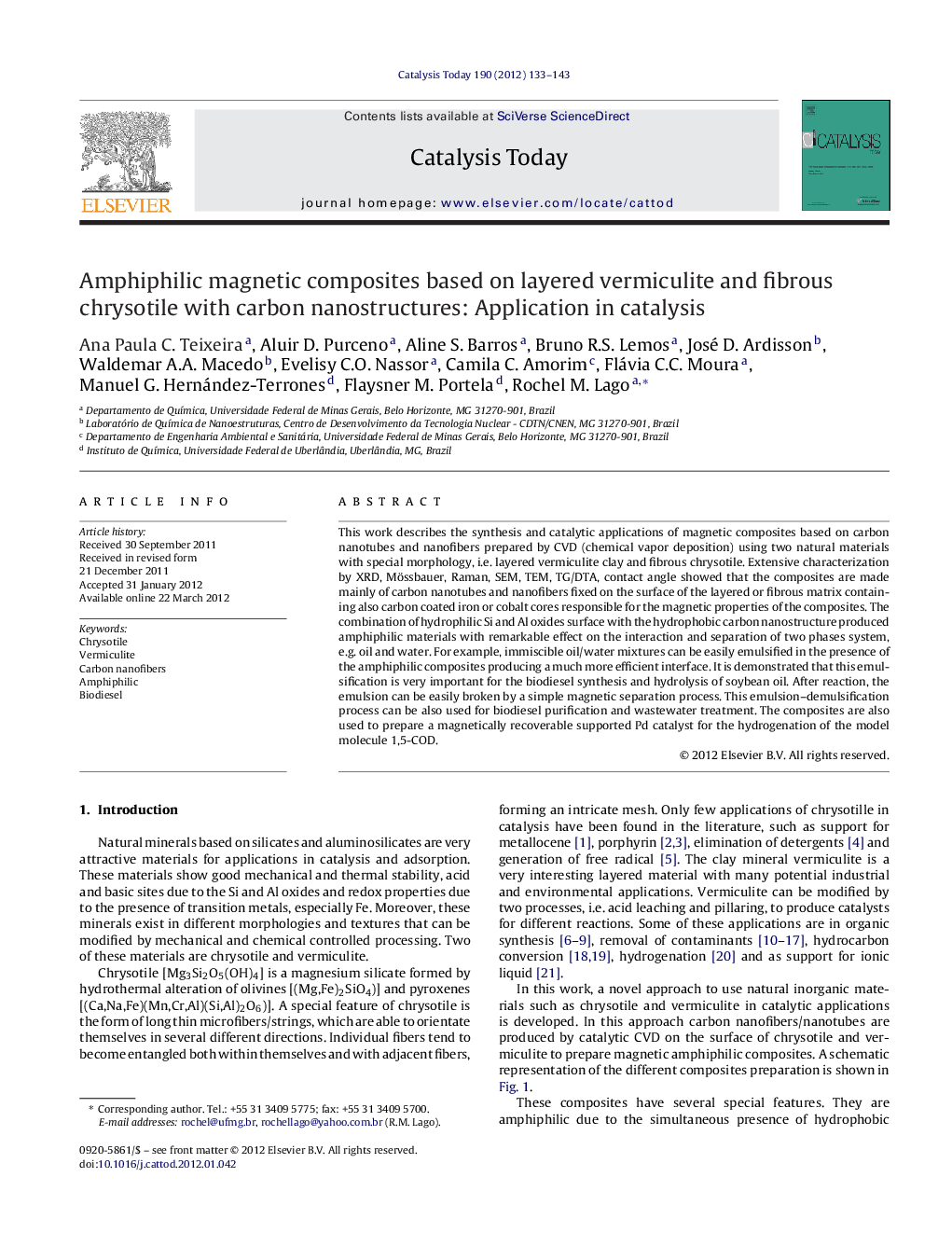| Article ID | Journal | Published Year | Pages | File Type |
|---|---|---|---|---|
| 55244 | Catalysis Today | 2012 | 11 Pages |
This work describes the synthesis and catalytic applications of magnetic composites based on carbon nanotubes and nanofibers prepared by CVD (chemical vapor deposition) using two natural materials with special morphology, i.e. layered vermiculite clay and fibrous chrysotile. Extensive characterization by XRD, Mössbauer, Raman, SEM, TEM, TG/DTA, contact angle showed that the composites are made mainly of carbon nanotubes and nanofibers fixed on the surface of the layered or fibrous matrix containing also carbon coated iron or cobalt cores responsible for the magnetic properties of the composites. The combination of hydrophilic Si and Al oxides surface with the hydrophobic carbon nanostructure produced amphiphilic materials with remarkable effect on the interaction and separation of two phases system, e.g. oil and water. For example, immiscible oil/water mixtures can be easily emulsified in the presence of the amphiphilic composites producing a much more efficient interface. It is demonstrated that this emulsification is very important for the biodiesel synthesis and hydrolysis of soybean oil. After reaction, the emulsion can be easily broken by a simple magnetic separation process. This emulsion–demulsification process can be also used for biodiesel purification and wastewater treatment. The composites are also used to prepare a magnetically recoverable supported Pd catalyst for the hydrogenation of the model molecule 1,5-COD.
Graphical abstractFigure optionsDownload full-size imageDownload high-quality image (106 K)Download as PowerPoint slideHighlights► Vermiculite and chrysotile are used to produce composites with carbon nanostructures. ► These composites show special amphiphilic and magnetic properties. ► The composites show remarkable effect on biodiesel synthesis and oil hydrolysis.
